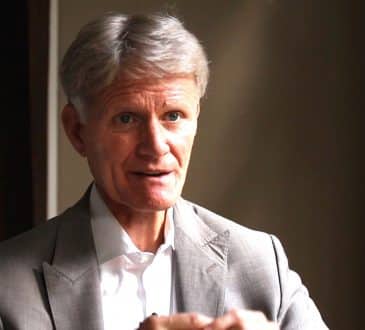7 Practices for Great Nonprofit Leadership

What makes not just good, but great nonprofit leadership? It’s easy to spot bad leadership — especially while working at an organization — and there are obviously common leadership practices that transcend all fields. But after over 20 years working with nonprofit leaders — CEOs, board chairs, and board members — to scale their impact, we at Altruist Partners have distilled a list of seven practices that not only delineate great nonprofit leadership, but that are absolutely critical — and potentially calamitous if not present — when accelerating nonprofit growth:
- Establish and Maintain Psychological Safety: First articulated by Amy C. Edmondson (now Gallo) in her book “The Fearless Organization,” psychological safety exists when everyone in an organization feels okay to take risks, speak candidly, and constructively critique and challenge the status quo, all without fear of reprisal, recrimination, or shaming. Establishing and maintaining psychological safety is perhaps the critical foundation when accelerating nonprofit growth and impact.How does one examine psychological safety? Consider what would happen if a staff member in your organization discovers bad news. Will your organization shoot the messenger? Or will it look for global solutions and root causes? Does psychological safety come at the expense of constructive criticism? No, it promotes an atmosphere where everyone — both staff and leadership — can share their thoughts and opinions, with problems and challenges being handled with detached professionalism and calm (with passion being saved for the successes). Who is responsible for promoting psychological safety? The CEO, as “chief culture artist,” sets the tone by continuously celebrating staff, acting with empathy, and encouraging diverse opinions.
- Practice Intentional Change Management: Leadership can do everything right — formulate the right organizational vision, create the right strategy, deliver the right tools to the right people — but if they don’t have the right change management strategy, it’s all for naught. Nothing will stick. Employees won’t buy in, productivity will drop, and the growth leadership had originally sought will go sour — with leadership left licking their wounds, and potentially updating their resumes. We advocate for and have consistently implemented a change management framework which John Kotter put forward in his 1995 article “Leading Change: Why Transformation Efforts Fail.” Starting with creating a climate for change and finishing with making the change stick, I find Kotter’s approach to be arguably the most clear, simple, and easy change management model to follow.
- Identify and Manage Disruptive People: Some of the biggest impediments to nonprofit team cohesion are internal disruptors. Unfortunately, in the resource and time-starved world of nonprofits, these pests can thrive, doing harm to both team building and trust. Great nonprofit leadership knows how important it is to have the right people on the bus, and therefore moves quickly to first identify and then to either resolve or remove the following four disruptor types before too much damage is done:The Dominator: We’ve all met a Dominator. Ever confident in their own opinions (due to actual knowledge or simple narcissism), Dominators are the ones prescribing their point of view in the quickest, loudest, or most profuse way. However, whether motivated by responsibility or vanity, Dominators tend to drown out others, thereby preventing a healthy, diverse flow of opinions.
The Interrogator: Interrogators are a little sneakier, because they use questions in their quest for power. Through obfuscation, frameshifting, or grand existential or philosophical questions too grand to be answered quickly, these pests sidetrack work, cast doubt, and seek extensive outside discussions, all for the sake of disrupting initiatives they don’t
The Aloof: There’s a high likelihood you have The Aloof sitting on your nonprofit board right now. They’re the ones not showing up, not answering emails, not having strong opinions, and not going out of their way to forward the cause. Essentially, they’re only on a nonprofit board to brag at parties about being on a nonprofit board. If allowed to stay, their presence communicates to the rest of the board that their involvement can also be half-baked.
The Victim: There are real victims in our world, but these personality types are certainly not among them. Like The Aloof, The Victim is also plagued by a lack of decision-making, engagement, and productivity. But they take absolutely no responsibility for it. Why? Because someone or something else is to blame, whether it be the team (“If everyone was on the same page, I could get my work done”), outside factors (“I don’t have the resources I need”), or fate (“No matter what I did, things just didn’t line up”).
- Definite Good Governance: Sitting on a nonprofit board comes with a bevy of responsibilities, but no instruction manual or learning curve; if a nonprofit is not performing well, it is the immediate fault of the board… and no one else. Therefore, great nonprofit leadership delineates best board practices for overseeing the organization effectively. Three such practices that support impact and growth include:Equity: Boards must ensure equitable and inclusive hiring, implement zero-tolerance policies for discrimination and harassment, and establish metrics to track progress on diversity goals.
Board Attributes: Great boards are a mix of ethnic and gender diversity; have expertise in areas such as law, finance, accounting, HR, marketing, sales, etc.; are highly committed; and make decisions based not on emotion but hard data.
Administrative, Legal, and Policy Guidance: It can be a substantial investment to get proper administration, legal, and policy infrastructure. Unfortunately, many boards save a buck by copying critical documents — which obviously doesn’t work when the inevitable happens. We suggest the nonprofit organization BoardSource to help in this area. - Ensure Balanced Thinking Styles: Great leadership knows how to build great teams. And when creating teams that need to perform at a high level, great leadership is conscious of and carefully considers neurodiversity, with the goal of achieving a neurobalanced team. Ichak Adizes lays out four main thinking types in his book “How to Solve the Mismanagement Crisis”: Producers, who are happiest when getting the work done; Administrators, who are happiest when organizing and creating systems; Entrepreneurs, who are happiest coming up with new ideas and solutions; and Integrators, who are happiest helping groups gel. All teams — especially executive teams — have all of these personality types represented. It’s not a guarantee for success, but not having every type represented — or having too many of one type — can open the door to dysfunction.
- Invest in Great People: It’s an unfortunate myth that says big salaries for nonprofit leadership and staff looks bad — after all, all that money should be going towards the cause, correct? Let’s be clear: This is not how great nonprofit leadership thinks. This would be like an MLB, NFL, NBA, or NHL team not investing in a great head coach or great players and still expecting great results. Silly, right? Great nonprofit leadership knows how important it is to have the right people on the bus. In order to get the right people on the bus, great leadership considers the private market and always offers strong compensation. And, once in the organization, great leadership gives top talent a reason to stay — which means an investment in organizational culture as well.
- Ensure Clear Succession Planning: The CEO and board chair are enormously important to a nonprofit’s success. Therefore, when these positions undergo inevitable personnel change, a nonprofit’s vision, strategy, operation, performance, culture, and impact will either be confidently continued or critically compromised. Great nonprofit leadership therefore knows the importance of succession planning, actively seeking and training executives for the CEO role — even when a CEO is present — and flanking board chairs with a vice and emeritus chair while conducting a three-phase transition process.
Written by Donald Summers, Ed.M.
Have you read?
The world’s largest cities by population.
Most Innovative Countries in the World.
Countries by Average Wealth per Person.
Countries with the Highest Age Dependency Ratio.
Bring the best of the CEOWORLD magazine's global journalism to audiences in the United States and around the world. - Add CEOWORLD magazine to your Google News feed.
Follow CEOWORLD magazine headlines on: Google News, LinkedIn, Twitter, and Facebook.
Copyright 2025 The CEOWORLD magazine. All rights reserved. This material (and any extract from it) must not be copied, redistributed or placed on any website, without CEOWORLD magazine' prior written consent. For media queries, please contact: info@ceoworld.biz








